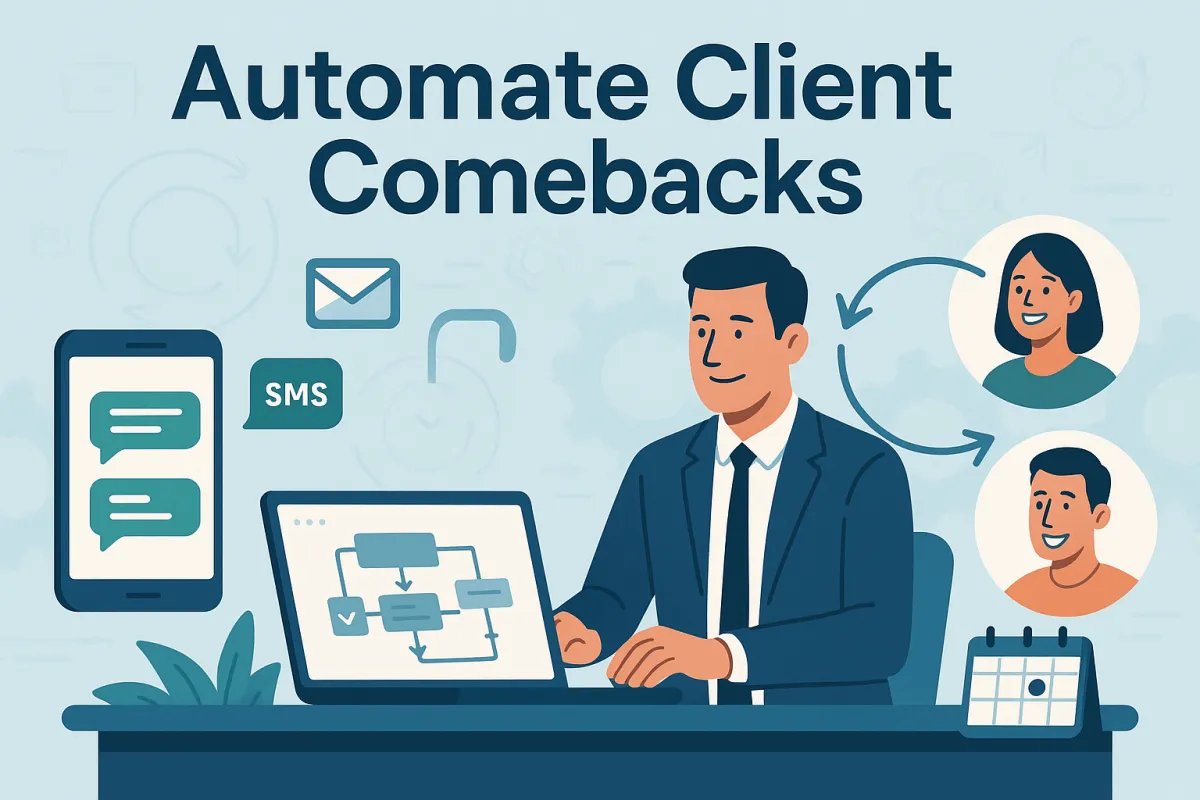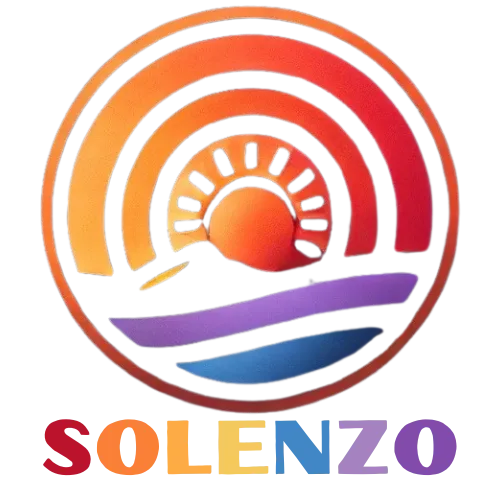
Automate Client Comebacks: How to Re-Engage Lapsed Customers Without Adding More Work
Automate Client Comebacks: How to Re-Engage Lapsed Customers Without Adding More Work
Every service business owner knows the sting of watching good customers disappear. One month, they're booking regular appointments, the next month, they've vanished without explanation. You check your calendar and see gaps where their names used to be.
Here's what most business owners don't realize: losing customers isn't the real problem. The real problem is not having a system to bring them back.
You've already done the hardest part with these customers. You've proven your value, delivered quality work, and built trust. Yet most businesses treat these lapsed customers like they never existed, focusing all their energy on finding new prospects who have never heard of them.
This approach is backwards and expensive. Acquiring a new customer costs 5 to 25 times more than re-engaging an existing one. Your lapsed customers represent the lowest-hanging fruit in your entire business.

The challenge isn't recognizing this opportunity. The challenge is creating a systematic approach to customer re-engagement that doesn't add more work to your already full plate. You need a process that runs itself, reaches out at the right times, and brings customers back without requiring constant attention from you.
That's exactly what we're going to build together. This isn't about sending desperate "we miss you" emails. This is about creating an automated comeback system that feels natural, provides value, and consistently brings lapsed customers back into your business.
What Does It Mean When a Customer Becomes Lapsed?
Before you can re-engage lapsed customers, you need to define exactly what "lapsed" means for your business. This isn't a one-size-fits-all definition. A lapsed customer for a plumber looks different than a lapsed customer for a dentist.
The key is understanding your natural service cycle and setting clear thresholds that make sense for your industry. Without these thresholds, you'll either reach out too early (annoying active customers) or too late (when customers have already moved on to competitors).
Here's how to determine your lapsed customer threshold:
• Recurring Services (cleaning, lawn care): Lapsed if they've missed two consecutive appointments or haven't scheduled in 45-60 days beyond the normal cycle
• Seasonal Services (HVAC, landscaping): Lapsed if they haven't booked during their typical season or haven't responded to seasonal outreach within 30 days
• Project-Based Services (plumbing, electrical): Lapsed if they haven't contacted you in 12-18 months
• Health Services (dental, medical): Use appointment intervals as your guide. Six-month cleanings mean eight months = lapsed
• Professional Services (accounting, legal): Consider natural cycles. Tax clients lapsed if they haven't engaged by early March.
The timeline matters because it triggers your entire re-engagement sequence. Get it right, and you'll catch customers at the perfect moment when they're starting to think about your service again.
Your customer management system should automatically flag accounts that cross your lapsed threshold. Whether you're using a simple spreadsheet or sophisticated CRM, the system should make it obvious which customers need attention and when.
Key Takeaway: Define "lapsed" based on your natural service cycle, not arbitrary timeframes. Set up automatic flagging so no customer falls through the cracks.
How Can You Segment Your Comeback List?
Not all lapsed customers are created equal. The customer who used your service three months ago requires a completely different approach than the customer who hasn't called in two years.
Effective customer re-engagement starts with smart segmentation based on recency, value, and service history.

Warm Leads (30-90 days lapsed) represent your highest-probability comeback opportunities. These customers recently experienced your service quality and likely lapsed due to timing, budget constraints, or simply forgetting to schedule.
For warm leads, your messaging can reference their recent experience and assume familiarity: "Hi Sarah, I noticed it's been a few months since we cleaned your gutters. With fall approaching, would you like to get on the schedule?"
Cold Leads (90+ days lapsed) require more finesse. These customers need to be reminded of who you are and why they should care. Your approach should focus on providing value first, re-establishing credibility, and gently nurturing them back.
For cold leads, reintroduce your business and provide immediate value: "Hi Sarah, this is Josh from ABC HVAC. We serviced your system last year. I wanted to share a quick tip that could save you money on your energy bills this winter."
Additional segmentation considerations:
• Customer Value: High-value customers deserve more personalized attention
• Service History: Emergency service customers might be interested in preventive maintenance
• Geographic: Different neighborhoods might have different seasonal patterns
• Seasonal: Spring customers need different timing than fall customers
Keep segmentation simple enough to execute consistently. Most service businesses do well with four to six segments that cover the major differences in customer behavior.
Key Takeaway: Segment by recency first (warm vs cold), then by value and service history. Keep it simple enough to execute consistently.
When Is the Right Time to Reach Out?
Timing in customer re-engagement isn't just important, it's everything. The difference between success and failure often comes down to getting the timing exactly right.
The most effective comeback sequences follow a proven three-touch timeline that balances persistence with respect.

Day 1: Initial Outreach should be friendly, non-aggressive, and focused on making it easy for the customer to re-engage. The tone should suggest that you've noticed their absence and want to help.
Example: "Hi Jennifer, I noticed it's been a while since we've serviced your HVAC system. With summer approaching, would you like to schedule your annual maintenance?"
Day 7-10: Follow-up Check serves as your gentle reminder for customers who didn't respond. Acknowledge they might have missed your first message and provide additional value or incentive.
Example: "Hi Jennifer, I wanted to follow up on my message about HVAC maintenance. I'm offering 15% off spring tune-ups for returning customers this month."
Day 21: Value Offer is your final attempt in the initial sequence. Provide significant value through education, special offers, or useful information.
Example: "Hi Jennifer, even if you're not ready to schedule maintenance yet, I wanted to share a quick tip that could save you money on your energy bills."
Consistency matters more than perfection. It's better to have a simple system that you execute reliably than a complex system that you use inconsistently.
Seasonal timing can significantly improve results. HVAC customers respond better to maintenance offers in spring and fall. Landscaping customers respond better to comeback messages in early spring when they're thinking about their yards.
Key Takeaway: Use a three-touch sequence (Day 1, Day 7-10, Day 21) and align timing with seasonal service cycles for maximum impact.
Which Channels Make the Biggest Impact?
The channel you choose for customer re-engagement can make or break your comeback campaign. The most effective campaigns use a strategic mix rather than relying on a single method.

SMS (50% of your mix) should be your primary channel because it delivers 98% open rates compared to 20% for email. Most people read texts within three minutes.
SMS works best for simple, direct messages. Use for warm leads who are likely to remember your business.
Example: "Hi Mike, it's been a few months since we serviced your AC. Ready to schedule your fall maintenance?"
Email (35% of your mix) crushes when you need to provide detailed information, include images, or deliver educational content. Use for cold leads who need more context about who you are.
The subject line determines whether your email gets opened. "Your AC needs attention" beats "HVAC maintenance special."
Direct Calls (15% of your mix) will always create the most personal connection and the highest conversion rates. Use for high-value customers, complex situations, or when you need immediate scheduling.
Direct calls work best when you can have a real conversation, address specific concerns, and close the booking on the spot. Reserve for your most valuable lapsed customers.
Rules of thumb:
• SMS for simple messages and warm leads
• Email for detailed information and cold leads
• Direct calls for high-value customers and immediate booking
Key Takeaway: Lead with SMS for immediate impact, use email for detailed information, and reserve direct calls for high-value personal connections.
What Should Your Messages Actually Say?
The words you use determine whether customers respond positively, ignore you completely, or feel annoyed. Effective comeback messaging strikes a balance between being helpful and being sales-focused.
The best comeback messages feel like they're coming from a helpful neighbor rather than a pushy salesperson.
SMS Example for Warm Leads:
"Hi Sarah, hope you're doing well! I noticed it's been about 6 months since we pruned your oak trees. With winter storms coming, those heavy branches might need attention. Just reply YES and I'll call to schedule. - Josh, TreeCare Pro"
Email Example for Cold Leads:
Subject: Quick tip to protect your trees this winter
Hi Sarah,
This is Josh from TreeCare Pro. We pruned your oak trees last spring, and I wanted to share a quick tip that could save you thousands in storm damage this winter.
With heavy snow and ice coming, weak or overgrown branches can snap and damage your roof, cars, or power lines. Here's a simple check: look for branches hanging over your house or any dead wood in the canopy.
If you'd like us to take care of this, I'm offering 20% off tree pruning for returning customers through November.
Best regards, Josh
Key messaging principles:
• Start with the relationship (acknowledge previous work)
• Provide immediate value before asking for anything
• Focus on their needs, not your need for business
• Make responding easy with clear next steps
• Use personalization (specific services, property details)
• Create gentle urgency (seasonal changes, weather events)
• Always follow all local and regional laws and regulations when it comes to SMS
Key Takeaway: Lead with value, acknowledge the relationship, and make responding simple. Focus on their needs, not your need for business.

Key metrics to track:
Open Rates: SMS should hit 90%+. Email should reach 25-35% for re-engagement campaigns (higher than typical marketing emails because of existing relationships).
Reply Rates: Aim for 15-25% reply rates for comeback campaigns, significantly higher than cold outreach.
Conversion Rates: Target 8-15% conversion rates. Warm leads typically convert at 15-25%, cold leads at 5-10%.
Revenue per Campaign: Calculate total revenue from customers who book service after comeback messages. Track both immediate and long-term revenue.
Cost per Re-engagement: Most service businesses find re-engaging costs 60-80% less than acquiring new customers.
Monthly KPIs to track:
• Total lapsed customers contacted
• Overall response rate
• Conversion rate to booked appointments
• Revenue generated from campaigns
• Cost comparison vs. new customer acquisition
Channel Performance: Compare response rates across SMS, email, and voicemail to optimize your mix.
The goal isn't to have perfect metrics immediately. Focus on establishing baseline performance and continuous improvement. Even modest improvements can significantly impact revenue and profitability.
Key Takeaway: Track open rates, reply rates, conversions, and revenue per campaign. Focus on continuous improvement rather than perfect initial metrics.
The Highest-ROI Step Most Businesses Ignore
Customer re-engagement represents the single highest-return investment most service businesses can make, yet it remains the most overlooked opportunity in the industry. While competitors spend thousands chasing new prospects, you can systematically bring back customers who already know, trust, and value your work.
The math is undeniable. Re-engaging a lapsed customer costs a fraction of acquiring a new one while often producing higher lifetime value. These customers have already experienced your service quality and chosen to work with you before.
But here's what separates successful businesses from struggling ones: execution. Having a great idea means nothing without a systematic approach that runs consistently without requiring constant attention from you.
The businesses that implement systematic customer re-engagement see remarkable results. They fill calendars with less advertising spend. They build stronger relationships with their best customers. They create predictable revenue streams that don't depend on constantly finding new prospects.
Your lapsed customers are waiting for you to reach out. When you reach out at the right time with the right message, you remind them why they chose you in the first place.
If you're ready to build a comeback system that brings lapsed customers back without adding more work to your plate, we can help. At Solenzo, we specialize in creating automated customer re-engagement systems for service businesses.
We'll help you identify your lapsed customers, create the right messaging for your industry, set up automated sequences that run themselves, and track results so you can see exactly how much revenue your comeback campaigns generate.
Ready to turn your lapsed customers into a predictable revenue stream? Book Your Free Strategy Call Now to discuss how we can build a custom comeback system for your business. We'll analyze your current customer base, identify your biggest re-engagement opportunities, and show you exactly how to implement a system that brings customers back automatically.
Don't let another month pass by watching good customers disappear when you could be automatically bringing them back.


